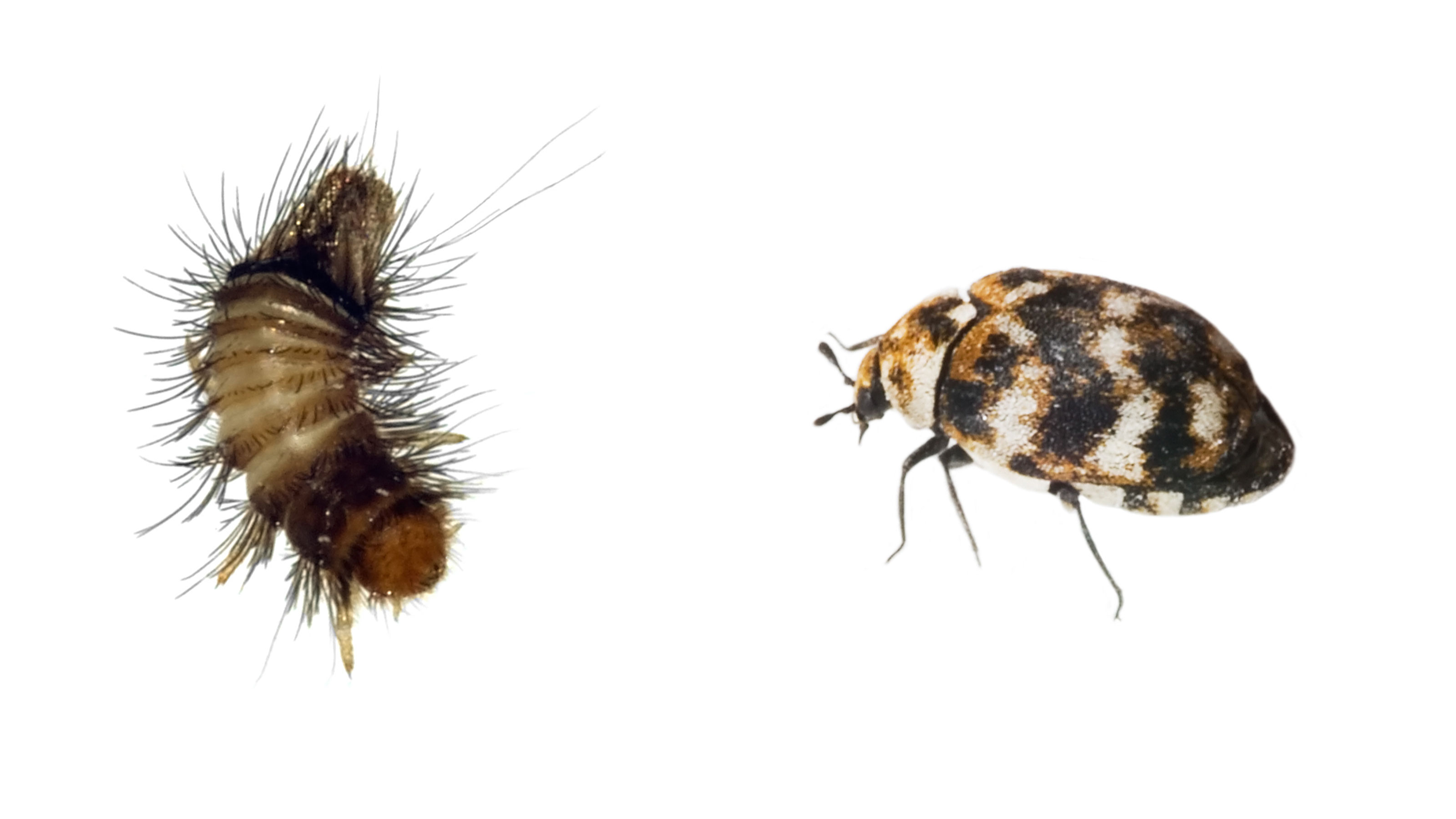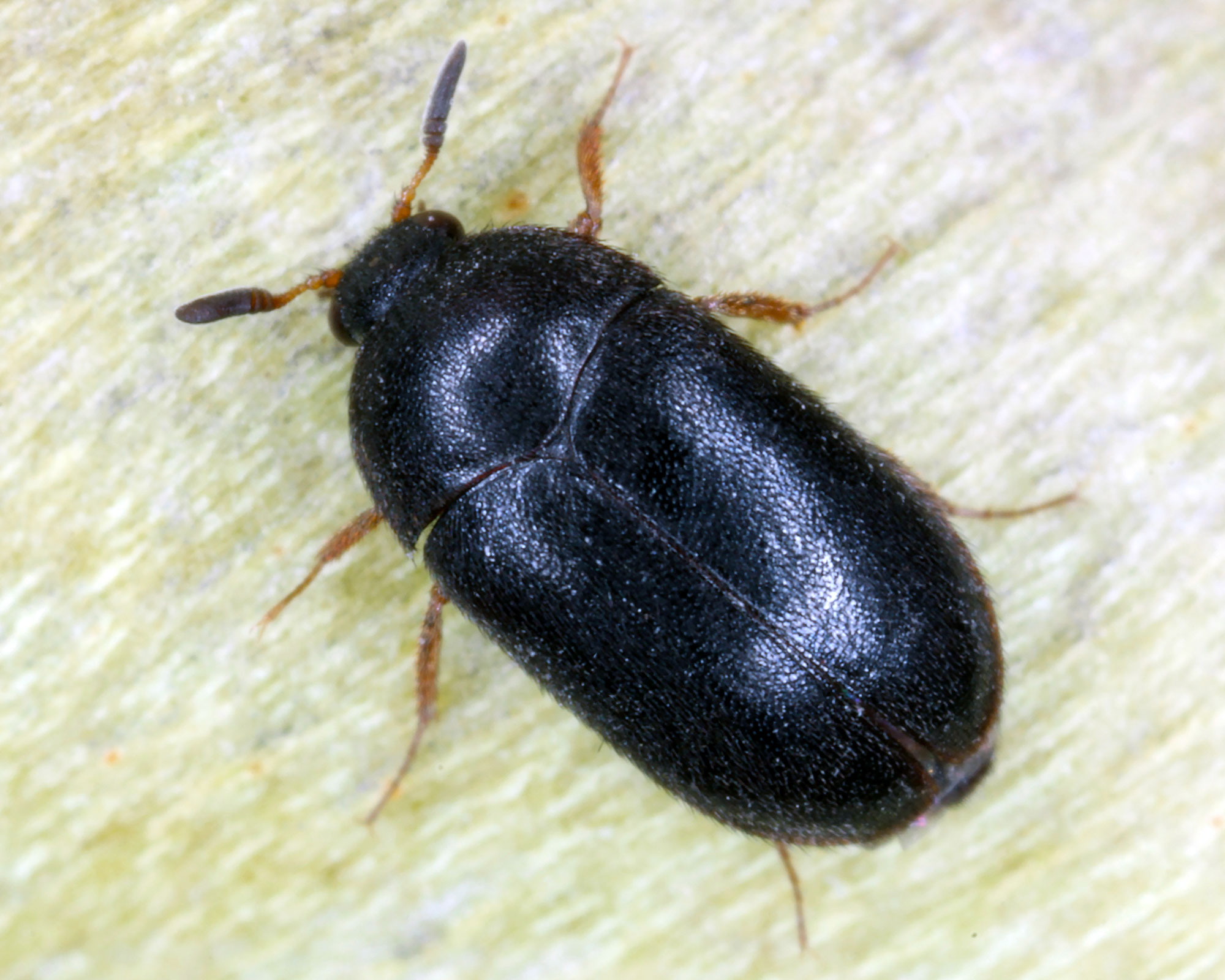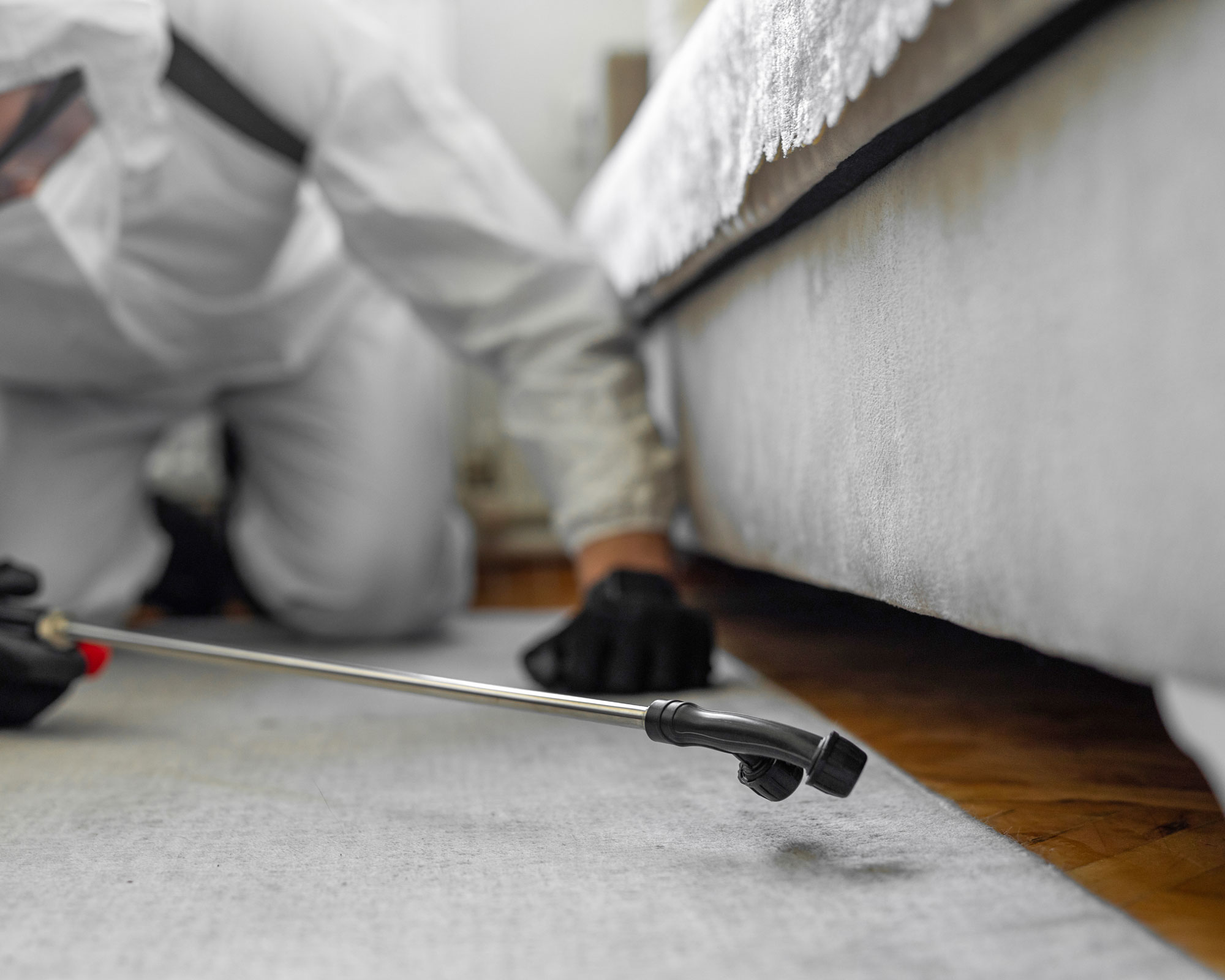Pest control pros say these 5 steps will get rid of carpet beetle larvae properly
Prevent your fabrics from getting eaten by these pests with professional advice


Carpet beetles are tiny insects that create holes in our clothing, rugs, and drapes, making their way in on infested items like second-hand furniture, or simply through the window. Their presence is often mistaken for bed bugs or moths, but a big clue is their pale brown skin that they shed and leave behind.
Hatching from spring into early summer, they go from egg to larvae to pupa, before maturing into adult beetles. It's the larvae, which are covered in spiky bristles, that do the damage, as well as cause skin irritation.
So, how do you get rid of carpet beetle larvae and prevent them from coming back? Pest control professionals have shared a combination of cleaning tips and deterrents to help you get rid of them.
How to get rid of carpet beetle larvae
A three-pronged attack is needed, according to David Floyd, the owner of The Pest Informer. 'To permanently get rid of carpet beetle larvae, you will need to combine thorough cleaning, targeted treatments, and preventive measures. If you do only one or the other, it’s likely that carpet beetles will just come right back,' he warns.

The three main carpet beetle species are black, two-spotted and varied, and while the beetles themselves will cause no harm, the larvae can be destructive pests
Do I definitely have carpet beetles?
Carpet beetles are more rounded in shape than bed bugs, and some have a speckled appearance. They look a little like ladybirds but are brown and mottled. The larvae (also called 'woolly bears') are brown and spikey and are typically found in darker enclosed spaces, like closets and pantries.
If you've noticed holes continuing to appear in clothing and rugs despite trying methods of getting rid of moths, it could be that carpet beetle larvae are chewing through them. They feed on keratin in natural fibers, such as wool, leather, silk, fur, felt, feathers, and linen.
Try to identify the source and then start treatment.
Design expertise in your inbox – from inspiring decorating ideas and beautiful celebrity homes to practical gardening advice and shopping round-ups.
1. Wash infested items
David Floyd, owner of The Pest Informer recommends washing all infested clothing, bedding, and other washable items in hot water (at least 120°F or 49°C) and drying them on the highest heat setting.
This will kill any remaining larvae and eggs. You can also kill carpet beetles and larvae by freezing items that can't be washed.
2. Vacuum regularly

Although it can happen to anyone, following our cleaning tips and maintaining a good level of cleanliness at home will help to prevent carpet beetles, so run your best vacuum across all flooring areas as often as you can. When dealing with a carpet beetle infestation, make sure you dispose of the vacuum bag or contents in a sealed plastic bag to avoid future contaminations.
3. Use insecticides

'If an existing colony has been discovered it may be necessary to resort to specific pest control measures such as insecticides to successfully remove carpet beetles larvae once and for all!' says Derek Carter, owner of Pests Termination. 'You can use Tempo Ultra SC, at Walmart to get rid of carpet beetles and the larvae.'
Alternatively, you may like to try natural pest deterrents diatomaceous earth and boric acid, available at Walmart. David Floyd, a pest control professional, explains that these natural substances can help kill carpet beetle larvae by damaging their exoskeletons.
'Lightly dust affected areas with food-grade diatomaceous earth or boric acid, and vacuum the area after a few days. Be sure to wear a mask when applying these substances to avoid inhaling the fine particles,' he advises.
4. Purchase airtight containers
Professional organizer Jeniffer Smith at Urban Home Corner recommends storing natural fibers like wool, feathers, and fur in airtight containers to prevent infestations in the future. The Container Store's airtight containers come in a range of sizes so you can neatly store items away and maximize the space you have available.
When storing away winter clothes, vacuum packs, at Amazon, will help to save space and prevent carpet beetles from finding their way to your coats and scarves.

Jeniffer Smith is a homemaker and blogger with Urban Home Corner. A self-taught appliance expert, Jeniffer is now the go-to for organizing appliance queries on the blog, helping clients find affordable solutions to common home problems.
5. Seal over cracks and crevices
'By sealing cracks or crevices that give them access into your house, you have a good chance at deterring future colonies from forming in your home,' says Derek Carter.
FAQs
How do I permanently get rid of carpet beetle larvae?
Carpet beetles can be a nuisance whether or not you have carpeted floors. If they keep coming back, pest control professional Derek Carter says they could be feeding off the dust, pet hair, or debris. 'Recent disturbances like new carpet installation or moving into a fresh space might activate existing populations already present,' he adds.
What smell do carpet beetle larvae hate?
Derek Carter recommends cedarwood: 'With naturally-occurring insect repellent thujone, it'll deter carpet beetles and protect your belongings. Try using chips or essential oil in areas vulnerable to these pests!'
How do I find the source of carpet beetles?
These destructive pests can come in through the window or on contaminated goods, like groceries or second-hand fabrics. A common place where they are likely to linger is in wall voids, although some will be found in carpets, fabrics and clothing.
'Most carpet beetle varieties need humidity and dark spaces to molt and become adults, so that's why they find places where no (or very, very little) light is, such as your wall voids,' says Megan Wede, the co-owner of Done Right Pest Solutions.
If the problem persists, it's time to call in a professional. It can be disruptive as you may have to empty out closets for them to be treated but will be well worth it in the long run for the sake of your best sweaters, winter coats, rugs and peace of mind.

Millie is a freelance writer and qualified interior designer based in Sheffield. She has many years of experience in the world of content and marketing, and previously worked as the head of Solved at Homes & Gardens. Before that, she worked in SEO at News UK in London and New York. She has a first-class degree in French and Italian from UCL and loves to weave decor into her home that reminds her of time spent living and studying in Bologna. Millie believes a clutter-free space that you love coming home every day is the best secret weapon for our well-being.